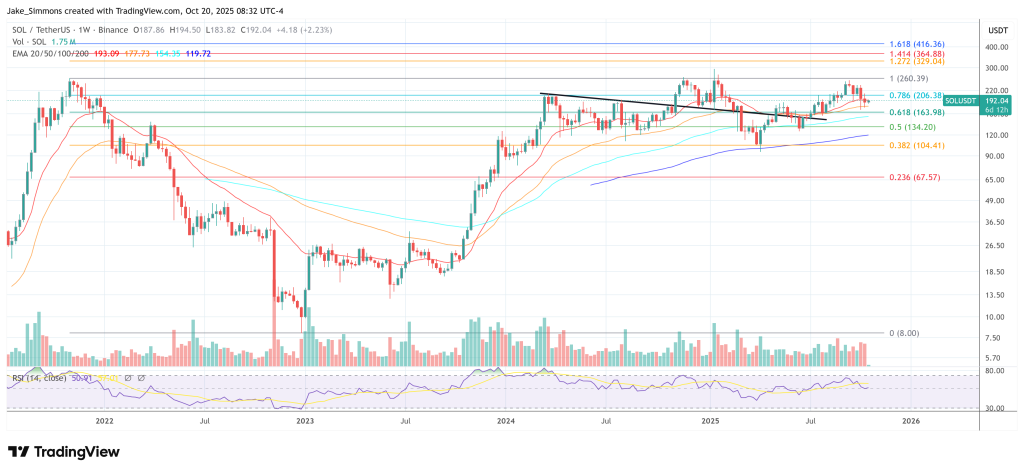Oh, to be in vogue! It seems the discerning crypto set – or those who simply follow the financial whims of the moment – have settled upon Solana as their latest obsession. Grayscale, those arbiters of… well, grayscale assessments, have declared it a “financial bazaar.” I daresay, the image is rather apt. A bazaar, after all, is brimming with activity, some of it genuinely valuable, much of it… not so much. Still, one must appreciate the exuberance. It’s positively stimulating.
Apparently, this Solana boasts a “depth and diversity of on-chain activity” that leaves its rivals trailing in the dust. Users, transactions, fees – all metrics, you understand, that Grayscale deems essential for discerning the truly fashionable blockchains. How terribly practical! As if genuine worth could be quantified by such pedestrian measures. Nevertheless, they insist this “diversity” is the foundation for SOL’s rising valuation. One suspects a hint of hyperbole, but who am I to quibble with a good narrative?
Solana: A Leading Bazaar, Apparently
They even bestow upon it a rather grand valuation – roughly $119 billion, a figure that sounds impressively substantial, doesn’t it? – and position SOL as the fifth-largest crypto asset. The third most liquid! One wonders if liquidity equates to substance, or merely the frantic paddling of those hoping to escape the inevitable downturn. Grayscale calls it a “digital commodity,” a rather… prosaic description for something so relentlessly hyped.
The applications! Oh, the applications! Decentralized finance, consumer whims, even infrastructure networks – Solana apparently touches them all, like a social climber at a particularly crowded soiree. They boast about DEXs clearing over a trillion dollars’ worth of volume, and a “Pump.fun” platform with two million monthly users. I shudder to think what they are pumping. 💸
And then there’s Helium, migrating to Solana and promising real-world impact. A partnership with AT&T! How very… mainstream. They even trumpet brisk NFT trading and some foothold in tokenized assets. One begins to suspect the sheer volume of activity is a distraction from any profound underlying significance.
The fees, of course, are a delightful detail. About $425 million a month, they proclaim with an air of triumph! It’s described as “the most direct measure of total demand”. Truly, one wonders if desperation should be included in that assessment. Still, a blockchain that earns such sums must be doing something right, even if it’s merely capitalizing on the gullibility of investors.
Speed is, naturally, paramount. Blocks arrive every 400 milliseconds, transactions finalize in a mere 12-13 seconds. Faster, faster! As if haste were a virtue in matters of finance. And the fees! Just $0.02 on average. Astonishingly affordable… until the next surge in popularity inevitably drives them skyward.🚀
They bill Solana as “a fast and cheap blockchain for everyone.” A rather democratic sentiment, wouldn’t you agree? And they laud its “best new-user experience”. One can only hope the experience doesn’t involve losing one’s shirt in a poorly regulated market. The architecture, described as “monolithic,” – a word that conjures up images of rather imposing structures – apparently avoids the messy complications of bridging between execution domains. Such commendable streamlining!
SOL Tokenomics And The Developer Set
The tokenomics are predictably complex, involving dilution and staking yields. Issuance expands supply, naturally, but staking offers a glimmer of offsetting returns. A delicate balance, one suspects, easily upset by the vagaries of the market. They claim a developer community of over 1,000, all feverishly working on the Solana ecosystem. One anticipates a glut of applications, most of which will inevitably fade into obscurity.
The Solana Virtual Machine, they suggest, creates a certain “sticky demand.” An intriguing phrase. It seems one cannot simply transplant applications to other blockchains. Clever, in a slightly manipulative sort of way. One starts to wonder if this isn’t less about technical superiority and more about creating a gilded cage for developers.
But let us not be entirely cynical. There are risks, they concede. Rival chains are faster, cheaper – and potentially even more centralized. A rather troubling thought. And SOL “may be less suitable as a long-term ‘store of value’” than Bitcoin or Ether. A damning admission, if ever there was one.
The hardware requirements, they whisper, are rather substantial. Most nodes operate in data centers – a centralization point that could prove problematic. Ah, the inherent contradictions of the modern age. 🧐 The pursuit of efficiency often comes at the expense of decentralization. Such is the price of progress, I suppose.
In the end, Grayscale concludes that Solana is presently “the leading network for on-chain activity.” A bold assertion, to be sure. And their base case is that continued growth will translate to a rising SOL price. One can only hope the investors are as discerning as they are optimistic. For as Oscar Wilde himself observed, “I can resist everything except temptation.” One suspects many crypto investors find Solana to be utterly irresistible.
At press time, SOL traded at

Read More
- Gold Rate Forecast
- Silver Rate Forecast
- Brent Oil Forecast
- Tornado Cash Ruined DeFi Dreams: The Roman Storm Saga
- Bitcoin Treasuries Go Bonkers in August: 47K BTC & $5.2B Added – But Who’s Counting?
- Evernorth’s XRP Gamble: Can They Outwit the Market? 🤑🚀
- USD VES PREDICTION
- Solana’s Wild Ride: Will SOL Bulls Outrun Gravity? 🚀💰
- Will Chainlink Hit $30? The Plot Thickens! 🚀📈
- Dogecoin’s Pending Triumph: Will the Meme Coin Survive or Just Meme?
2025-10-21 04:27